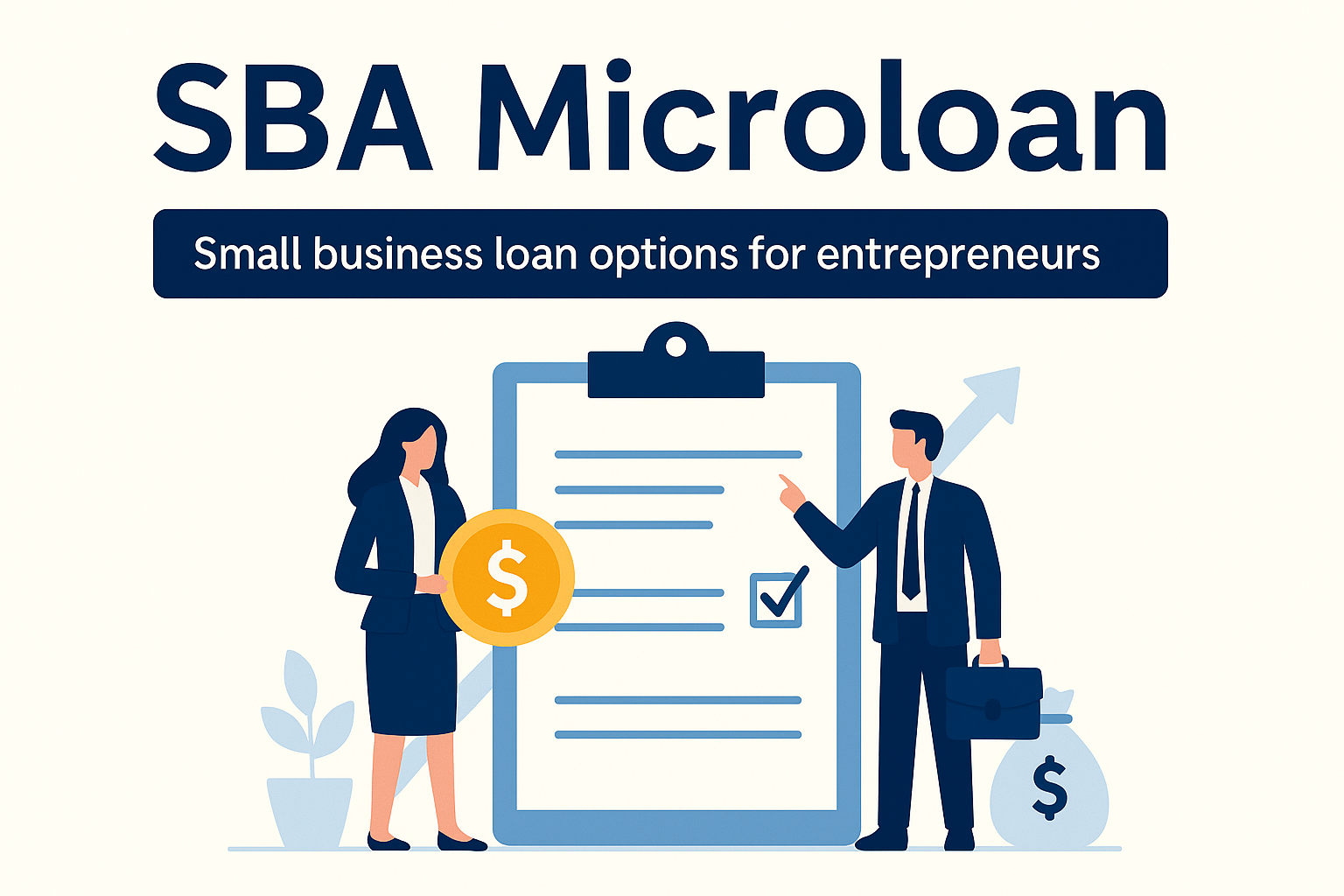Phone:
(844) 462-4730
Business Hours
Mon-Fri: 9AM - 6PM
Address
97 Newkirk Street, 3rd Floor
Jersey City, NJ 07306

Phone:
(844) 462-4730
Business Hours
Mon-Fri: 9AM - 6PM
Address
97 Newkirk Street, 3rd Floor
Jersey City, NJ 07306
Disclosure: All data and rankings in this report reflect SBA Microloan activity through June 30, 2025, based on publicly available lender-level approvals.

Ohio leads in SBA Microloan approvals, while New York tops total funding.
Retail, food, and transport industries are top microloan recipients.
Startups received 26% of loans, showing a strong push toward new entrepreneurs.
Estimated 44.4% decline rate, signaling tough approval odds.
The SBA Microloan Program continues to play a critical role in fueling America’s smallest businesses. Designed for startups, solopreneurs, and underserved founders, this program connects entrepreneurs with capital through nonprofit lenders—unlocking funding that traditional banks often overlook.
This June 2025 mid-year bulletin breaks down who’s getting funded, how much, and what industries and states are thriving under the program. If you’re evaluating your funding options or navigating a tight lending environment, this report offers data-driven direction.
An SBA loan is a small business loan partially guaranteed by the U.S. Small Business Administration, created to help entrepreneurs access funding that might be out of reach through traditional banks. Popular programs include the SBA 7a, 504, and the Microloan program, each offering flexible terms and support to help businesses launch, grow, or recover.
| Rank | State | Loans Approved |
|---|---|---|
| 1 | Ohio | 614 |
| 2 | New York | 364 |
| 3 | Pennsylvania | 185 |
| 4 | Kentucky | 154 |
| 5 | Maryland | 153 |
| Rank | State | Total Loan Amount |
|---|---|---|
| 1 | New York | $5.9M |
| 2 | Indiana | $3.38M |
| 3 | Texas | $3.31M |
| 4 | California | $3.26M |
| 5 | Pennsylvania | $2.95M |
💡 Insight: Ohio dominates by number of microloans thanks to high-volume lenders like ECDI, while New York leads in overall capital deployed.
| Rank | Industry | Approvals |
|---|---|---|
| 1 | Retail Trade | 518 |
| 2 | Other Services | 470 |
| 3 | Accommodation & Food Services | 412 |
| 4 | Professional & Technical Services | 356 |
| 5 | Transportation & Warehousing | 349 |
| Rank | Industry | Loan Amount |
|---|---|---|
| 1 | Accommodation & Food Services | $8.18M |
| 2 | Retail Trade | $7.05M |
| 3 | Transportation & Warehousing | $6.09M |
| 4 | Other Services | $5.89M |
| 5 | Health Care & Social Assistance | $5.47M |
💡 Insight: Retail, food service, and logistics dominate SBA Microloan demand. These sectors often face cash flow challenges, making them ideal microloan candidates.
| Business Type | Loan Count | Funding Amount |
|---|---|---|
| Existing Businesses | 2,599 | $37.7M |
| Startups | 916 | $17.9M |
💡 Insight: Startups account for 1 in 4 SBA Microloans and receive a higher share of funding than their volume would suggest—highlighting their viability under this program.
| # | Lender | State | Loans | Total | Avg |
|---|---|---|---|---|---|
| 1 | ECDI | OH | 628 | $1.88M | $3,004 |
| 2 | Pursuit CDC | NY | 119 | $1.83M | $15.4K |
| 3 | Fresno EOC | CA | 107 | $2.41M | $22.5K |
| 4 | Bankable | IN | 93 | $3.03M | $32.6K |
| 5 | Accompany Capital | NY | 89 | $1.85M | $20.8K |
💡 Insight: Loan size varies widely. ECDI prioritizes access over size, while Bankable serves larger, more capital-ready applicants.
Find a Lender: Use SBA’s Lender Match to locate approved intermediaries.
Write a Business Plan: Be clear on how funds will be used and repaid.
Gather Docs: Tax returns, profit & loss, personal financials.
Attend Coaching: Many lenders require technical assistance before approval.
Apply Directly: Submit your application through the intermediary (not directly to SBA).
Max Loan Size: $50,000
Terms: Up to 6 years
Interest Rates: 8–13%
Collateral: Often not required
Personal Guarantee: Typically required
Eligible Uses: Working capital, equipment, marketing, inventory, lease deposits
💡 Insight: Each lender sets its own criteria but typically requires collateral and a personal guarantee.
Estimated Applications (YTD): ~6,300
Loans Approved: 3,515
Estimated Decline Rate: 44.4%
Weak credit history
Missing financials or no documentation
No business plan
Cash flow concerns
Request a reason from your lender
Work with SCORE or an SBDC for improvement
Consider non-bank alternatives like AMP Advance
SBA Microloans may be modest in size, but they’re a powerful launchpad for driven entrepreneurs with limited access to traditional capital. Whether you’re just getting started or scaling lean, this program delivers flexible, affordable funding—but approvals aren’t guaranteed. That’s where AMP Advance comes in, offering faster, no-hassle options like revenue-based financing, equipment loans, startup funding, and business lines of credit—with no hard credit pull required.
Address
97 Newkirk Street, 3rd Floor
Jersey City, NJ 07306

